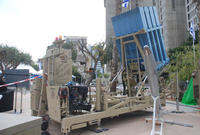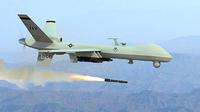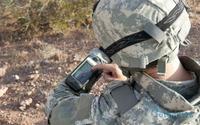-
Short-range missile tracking satellite demonstrated
There are two weapons the weak can employ against the strong: the first is terror; the second are rockets and short range missiles; to operate rockets and short range missiles, though, the weaker side must be in control of some territory and must have a state ready to supply it with these more advanced weapon systems; Hezbollah (in May 2000) and Hamas (in June 2007) came into control of territory, and are being supplied by Iran and Syria with missiles and rockets; Israel last Sunday deployed the first batteries of its Iron Dome short-range missile defense; the United States is not lagging far behind
-
-
Three dolphins found dead after U.S. Navy training exercise
Three dolphins died this month during a U.S. Navy training exercise using underwater explosives near the San Diego County coast; environmentalists have argued that the Navy’s sonar exercises can deafen and even kill whales and other marine life; the Supreme Court ruled in favor of the military in 2008
-
-
Israel unveils Iron Dome anti-rocket defense system

Israel on Sunday stationed the first batteries of its Iron Dome short-range missile defense system in the south of the country; the military stressed the initial deployment was experimental; after being deployed in the south, the system will then be deployed along the Lebanese border, from where Hezbollah militants fired some 4,000 rockets into northern Israel during a 2006 war; the most obvious and immediate benefit of the defensive system would be the de-fanging of the two more radical groups in the region, Hezbollah and Hamas; the system, though, is more significant in what it will allow Israel to do vis-à-vis the Palestinians: if the same rockets Hamas is firing at Israel from the Gaza Strip were to be fired from the West Bank, all of Israel’s population and economic centers will be under threat; if Iron Dome proved effective, it would make it easier for Israel to consider deep withdrawals from the West Bank, thus allowing the establishment of a viable Palestinian state without compromising Israeli security
-
-
Lockheed developing autonomous and covert rover
A surveillance robot aims to operate around humans without being detected by them; the machine uses a laser scanner to builds a 3D computer model of its surroundings and uses a set of acoustic sensors to distinguish the proximity and direction of footsteps
-
-
CT scans help doctors treat sniper wounds

Determining a bullet or bomb fragment’s path through flesh and bone can help doctors treat injuries and decide which patients to prioritize; instead of relying solely on visual cues and a possibly deviated bullet path, researchers are working to develop high-resolution computed tomography (CT)-based methods of accurately determining a bullet’s trajectory
-
-
Ex-CIA head praises drone warfare

More than forty people were killed in Pakistan last week in a U.S. drone attack near the Afghan border; despite the controversial use of drones, ex-CIA director Michael Hayden says they are winning the war; ten years after 9/11, al Qaeda’s leadership no longer enjoys sanctuary in the tribal areas of Pakistan where for many years, it has been able to plot and train its recruits
-
-
Marines integrate biometrics on battlefield
The U.S. Marine Corps is beginning to implement biometric technologies to help them identify insurgents on the battlefield; members of the III Marine Expeditionary Force in Japan are undergoing training to learn how to gather biometric data; in particular, troops are looking for fingerprints from improvised explosive devices (IEDs) to help capture bomb makers; the prints are stored in a database that will soon be shared with DHS border agents to assist with counter-terrorism efforts within the United States; border agents will be able to determine if people entering the country match any of the insurgents identified abroad
-
-
Army to request proposals for biological agent detection system
The Army is set to begin requesting proposals for the initial phase of its Joint Biological Standoff Detection System Increment 2 (JBSDS 2) program at the end of March; the program’s objective is to procure fully functional biological detection systems; JBSDS 2 is designed to provide devices capable of detecting, tracking, and identifying biological warfare clouds; the program specifies that the devices should be capable of identifying any biological agent, organism, or poison that is capable of killing, incapacitating, or impeding a large force
-
-
Army signs deal with ChemImage for explosive detection technology
The U.S. Army’s Space and Missile Defense command recently signed a $17 million contract with ChemImage Corporation to implement its real-time sensor technology to detect explosive threats in the field; ChemImage’s technology would give U.S. troops the ability to identify objects from a distance to determine if they are explosive, chemical, or biological threats; the devices rely on molecular spectroscopy and digital imaging to analyze material
-
-
Smartphones makes military networks vulnerable

The U.S. military has increasingly integrated smartphones into combat operations, but cyber security experts warn that these devices could also pose a major security challenge to military networks; smartphones are fast becoming the target of choice for hackers; Android phone applications have no security screening procedures before they are released, while iPhone apps are only loosely screened; to secure these devices, the military can encrypt all data, turn off voice capabilities, and lock the phone to only allow the use of approved apps; the Army is considering issuing every soldier a smartphone
-
-
Vallon showcases innovative mine detector
German company Vallon unveiled its latest mine detection system; one of its advantages is that it can detect mines made with no metal parts (the device can detect metal-free particles at a depth of 40 cm, and metal objects at greater depths); the UN is already deploying the device in mine-clearance operations in thirty countries
-
-
Explosive-detecting rats to save soldiers' lives

An Oklahoma State University researcher received a $740,000 grant from the Department of Defense to conduct the research into using rats as landmine sniffers; rats have three advantages as bomb sniffers: the rodents, about the size of a small cat, can cover a lot of ground quickly; their acute sense of smell enables them to sniff out land mines, but they are small enough that they do not detonate the mines; also, they do not form attachments to their handlers so anyone could deploy them
-
-
Pentagon testing "Taser grenades"
The Pentagon recently placed an order for a test batch of “Taser grenades,” a long-range electroshock projectile; the grenades, designed by Taser International under a $2.5 million contract, are a forty-millimeter Human Electro-Muscular Incapacitation (HEMI) projectile that is intended to stick to a target and deliver a series of intense electric shocks, leaving them incapacitated; if tests are successful, HEMI could be ordered for rapid deployment to Afghanistan
-
-
Force Protection Equipment Consortium to meet in mid-May
Held every two years since 1997, the collaborative effort between government and more than 575 exhibitors from U.S. and allied industries known as the Force Protection Equipment Demonstration will feature more than 3,000 commercial off-the-shelf items of equipment and systems for countering terrorism
-
-
Fireballs neutralize biological weapons
A California company will develop fireballs that can neutralize biological weapons and infrared decoy flares that are nearly invisible to the naked eye; the company, the fireballs are among the counter-terrorism tools that Exquadrum plans to start testing soon at four abandoned military bunkers in Victorville, California
-
More headlines
The long view
Bookshelf: Smartphones Shape War in Hyperconnected World
The smartphone is helping to shape the conduct and representation of contemporary war. A new book argues that as an operative device, the smartphone is now “being used as a central weapon of war.”
